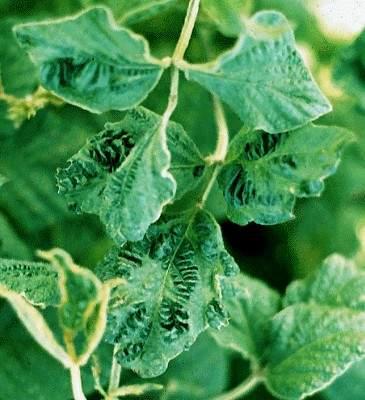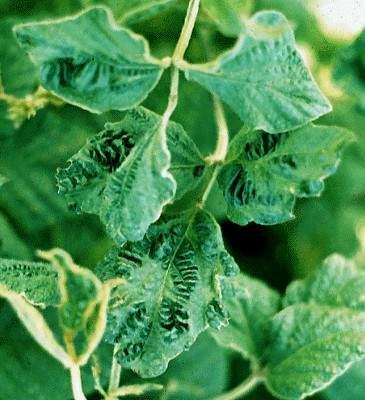

Soybean mosaic potyvirus (SMV)
Symptoms vary with host, virus strain, plant age at infection, and environment. Most infected cultivars are slightly stunted with fewer pods that are sometimes dwarfed and flattened, without hairs, and without seeds. Trifolilate leaves have a mosaic of light and dark green areas that may later become raised or blistered, particularly along the main veins. Primary leaves of some cultivars may show necrotic local lesions, which merge, into veinal necrosis followed by yellowing and leaf abscission.
Seeds from infected plants may be mottled brown or black, depending on hilum colour. Seeds may be smaller and germination reduced as compared to seed from non-infected plants. Mottling does not indicate that the virus is present in seeds as not all mottled seeds contain virus and not all seeds from virus-infected plants are mottled. SMV is sap and graft-transmissible. At least 32 aphid species, belonging to 15 different genera, transmit the SMV in a non-persistent manner. Virus isolates may show some vector specificity. Infected plants resulting from transmission through seed play an important role in SMV epidemiology. Such plants are sources for primary inoculum of SMV. In most cultivars, seed transmission is less than 5%, but no transmission occurs in some cultivars while others can have levels as high as 75%.
- Use certified disease-free seeds.
- Practise aphid control to reduce the spread of virus.
- Plant resistant cultivars, if available.
